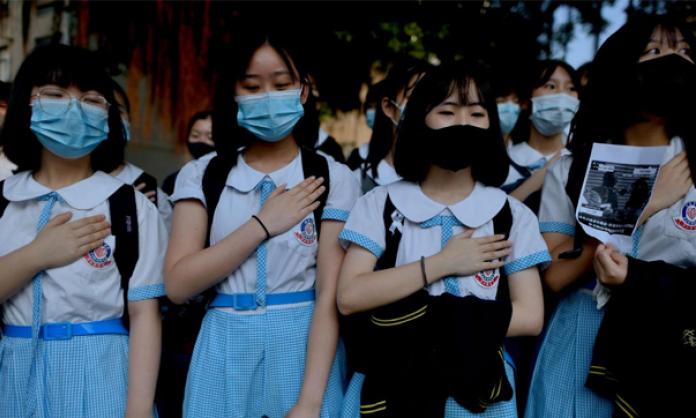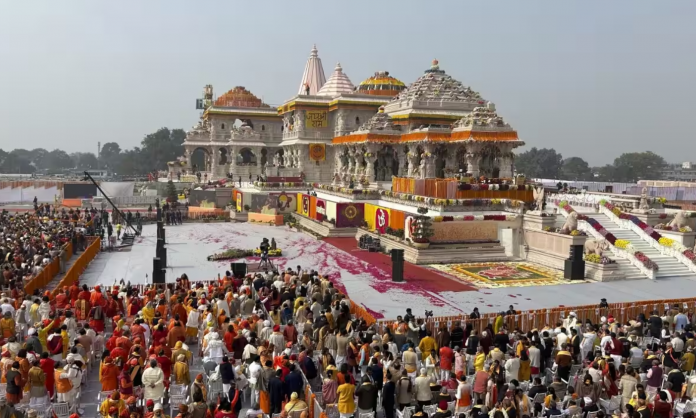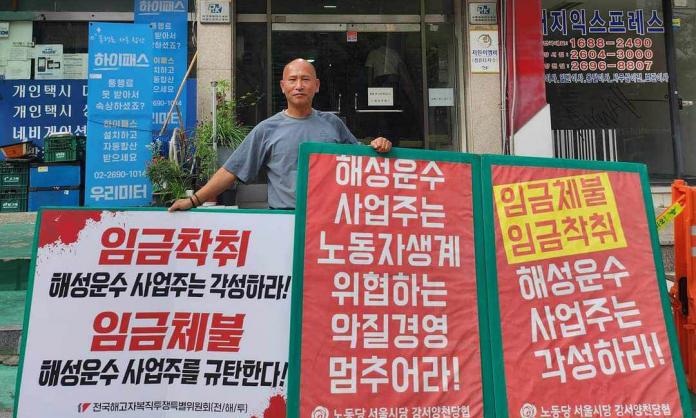The shooting of Tsang Chi-kin is a serious step in the direction of British colonial-era police violence. In a piece first published at rs21.org.uk, Colin Sparks reflects on the intensifying protests in Hong Kong on China’s National Day, 1 October.
----------
1 October was China’s National Day – a regimented celebration of 70 years of the “People’s Republic”. In Hong Kong, it was marked by the bitterest and most intensive protests since the current wave of struggle began. There is no better way of understanding the gulf between the Chinese leadership and the people of Hong Kong than the contrast between the hierarchically run, heavily dragooned, apparently endless stream of weaponry and soldiers in Beijing, and the energy, courage, determination and spontaneous self-organisation of the young demonstrators.
Tuesday came as the climax of four days of tumultuous protests. An illegal demonstration on Hong Kong island attracted around 100,000 people, while more than a dozen other battles flared in Kowloon and the New Territories. From early morning, when the ceremonial raising of the Chinese flag outside of the government offices in Tamar was met with protests that kept civic dignitaries cowering in a reception room watching events through closed-circuit TV, up until late-night confrontations in Prince Edward and Kwai Chung Market, the city was in turmoil.
The demonstrations have been met with increasing levels of police violence. The cops have long had free rein to brutalise anyone they think is a protester, but this has now reached a new and dangerous level. For the first time, a cop fired his handgun directly into the chest of a young protester at point-blank range. The victim, Tsang Chi-kin, is an 18-year-old secondary school student. He is still in a critical condition, but the prognosis is that he will survive. The shooting means the police have now crossed a line into the use of deadly force. The immediate response of city police chief Stephen Lo was that the action was “lawful and reasonable” and he has been backed by mainland media. His statement gives a green light to the next cop who draws his weapon in a tense situation. We are still some way short of the police deciding to follow British colonial policy and clear protests by systematically opening fire on demonstrators, but this is a serious step in that direction.
There is still no real sign of the movement running out of momentum. Illegal demonstrations remain big and there is no doubt that a legal march would attract the same vast numbers as at the start of the struggle. What is most impressive about the demonstrators is their level of self-organisation. Only a proportion of thousands in the street have the courage to be front line fighters but, for every one who does, there are many others who are ready to play supporting roles. Volunteer medical staff provide care for casualties, sometimes at the risk of serious injuries themselves. One young medical helper suffered severe damage to her right eye a couple of weeks ago after being hit by a police baton round. Older people, dressed in bright yellow jackets, try to prevent the worst violence by stepping between the police and their victims. They do so at considerable risk.
On every demonstration, there are caches of water, helmets, umbrellas, gas masks and other equipment provided by sympathisers, available for anyone who needs them. When a confrontation develops, human chains stretching two or three hundred metres form spontaneously to pass supplies along to the front line. Protesters use an elaborate system of hand signals to pass requests for different kinds of equipment down the chain. The sharp contrast between the streets of Beijing and the streets of Hong Kong is the contrast between people forced to follow orders from above and people voluntarily working together to solve an urgent problem.
The level of collective political consciousness is also impressive. Some buildings and shops are attacked and wrecked. They are not chosen at random. The offices of a government that denies democracy, gives tax breaks to the rich, and spends billions of dollars on projects designed to show loyalty to Beijing while neglecting the needs of the old and the poor, are targets of protesters’ anger. So too at the offices of pro-Beijing politicians. The businesses that are attacked are those, like Maxim’s catering chain, whose owners have been vocal in supporting the police. The Mass Transit Railway (MTR) is attacked and its stations are vandalised because it openly collaborates with the police to impede protests: on Tuesday, 45 of its 91 stations were closed to stop people moving around. Police vehicles are attacked but ambulances and fire engines are given free passage. Buses and private cars, even very expensive ones, are left unmolested when it comes to building barricades to hold back the cops.
That is not to say that the protesters are class conscious. Many of them grew up in households where “communism” means mainland China, with all its corruption and repression, and are not yet ready to listen to socialist arguments. They are not against the capitalist system but against those individual capitalists who side openly with the local government and Beijing. Socialists face a difficult task in persuading people that while democratisation would be a great step forward, changing the lives of Hong Kongers for the better will need more far-reaching changes.
For its part, Beijing is taking a leaf out of the British colonial playbook in its attempts to crush the unrest. After the police last opened fire on demonstrators, during the bitter protests of 1967, which were led by pro-Beijing militants, the colonial government took steps to head off trouble by improving social conditions. They launched a large scale program of building government housing for working class people. That program has been minimal since the return to China in 1997 and consequently the city’s poor face an acute housing crisis while even the better-off groan at the rents that result from the shortage of accommodation.
Beijing and its local allies now think they can solve its problems by breaking their long alliance with property speculators and forcing them to help with the resumption of large scale public housebuilding. The speculators have been quick to promise marginal concessions, making some of their hoard of unused land available for housing. Such token moves will not defuse the movement. Social conditions may lie in the background of the current unrest but the drivers of protest are the desire for a more democratic society and a defence of local identity against the steamroller of mainland homogenisation.
Demands for tougher action to stop the protests are increasingly heard from pro-Beijing politicians and the yellow Federation of Trade Unions. The leadership of the Junior Police Officers’ Association has joined their calls for the activation of the colonial era Emergency Regulations Ordinance, last used in 1967. “The draconian law allows censorship, arrests, detentions and deportations, the control of ports and all transport, the appropriation of property, and authorises the entry and search of premises”, a South China Morning Post article noted on 2 October. So far, at least, that strategy has zero chance of success. Every escalation in government violence has been met with increased resistance. The most recent resort to the use of firearms has produced exactly the same result. On Wednesday, students and alumni demonstrated at the school Tsang Chi-kin attends. At lunchtime, hundreds of office workers staged a spontaneous march through the streets of the Central financial district to protest at the shooting. Police violence is not going to crush the spirit of Hong Kong’s resistance.










